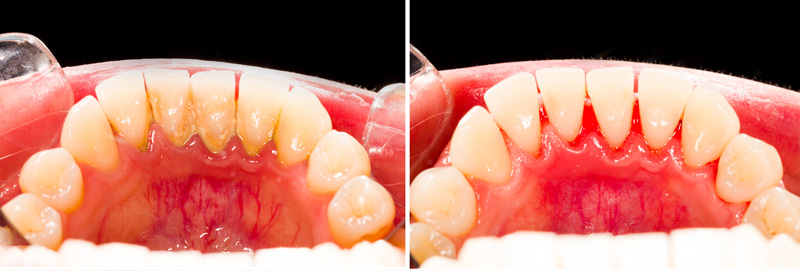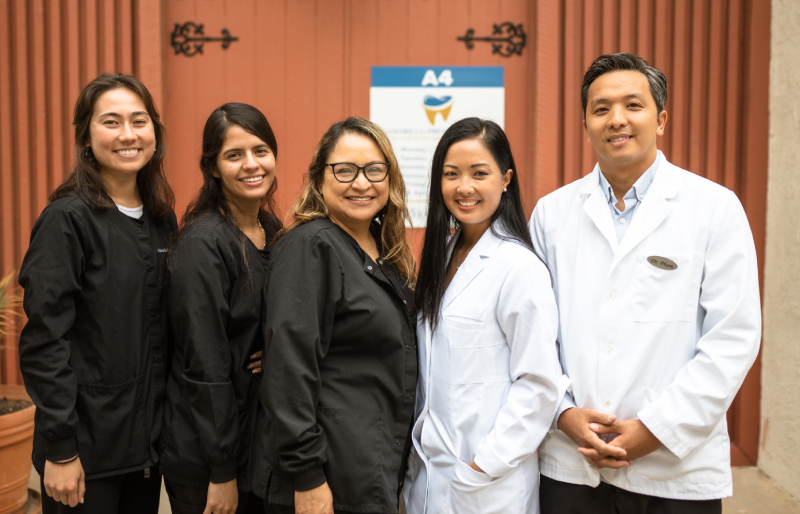Full Mouth Debridement in Camarillo

Delaying dental care due to other responsibilities is common but should be avoided. If you haven't had a professional teeth cleaning for an extended period, there might be a significant accumulation of plaque and tartar.
This buildup can make it challenging for a dentist to thoroughly examine the hard and soft tissues of your mouth, hindering their ability to assess your dental health comprehensively. In such cases, a full mouth debridement may be recommended.
A full mouth debridement (FMD) is a non-surgical procedure performed by a dentist or a dental specialist, such as a periodontist. It aims to eliminate extensive plaque and tartar buildup on and under the gums.
Discover more about the full mouth debridement procedure and the distinctions between FMD and other potential dental procedures you may require.
What Is a Full Mouth Debridement?
A full mouth debridement serves as an initial step in addressing severe plaque buildup or periodontal disease. This procedure, conducted in a dentist's office, typically takes longer than a standard teeth cleaning.
Dental plaque, a daily accumulation on teeth, can solidify into tartar when not brushed away regularly. Your dentist may refer to tartar as calculus. Tartar provides a surface where plaque can adhere, leading to cavities and gum disease (gingivitis). Gum disease can result in infections in your gums, ligaments, and the bones of your mouth, collectively termed periodontal disease.
Periodontal disease carries significant consequences for dental health and may even contribute to cardiovascular disease in some cases.
It is crucial for dentists to easily diagnose gingivitis and periodontal disease. Excessive plaque and tartar buildup make it challenging for dentists to thoroughly examine your teeth and gums.
FMD vs. Scaling and Root Planing
For individuals with periodontitis, inflamed gums and periodontal pockets beneath the gum line are common. These pockets are spaces where plaque and bacteria can accumulate. In such cases, dentists may recommend a more invasive procedure known as scaling and root planing, or a deep dental cleaning.
According to the American Dental Association, scaling and root planing may be performed under local anesthesia.
Scaling, akin to a full mouth debridement, removes tartar from teeth but goes deeper beneath the gums. Root planing involves smoothing a tooth's root. This procedure may cover the entire mouth or specific areas to aid gum tissue reattachment, closing small periodontal pockets and eliminating areas conducive to bacterial growth.
Post-procedure, antibiotics or antibacterial gels may be applied directly into the pockets to ensure they remain free of germs.
What Is the Full Mouth Debridement Procedure Like?
The standard procedure for a full mouth debridement typically unfolds as follows:
- Your dentist might administer a local anesthetic to numb specific areas of your mouth, depending on the extent of tartar buildup beneath the gum line and your personal sensitivity.
- Plaque and tartar will be removed from and around your teeth using hand-held instruments or an ultrasonic device employing vibrations and water to thoroughly clean the teeth.
- Additional treatments, such as teeth polishing or other recommended procedures for enhanced cleaning, may be suggested by your dentist.
Before and After a Full Mouth Debridement (FMD)
Before FMD:
- Teeth may appear yellow and discolored.
- Gums may seem elongated if they have receded from the teeth.
- Gums might exhibit a white appearance, with potential bleeding during brushing and flossing.
After FMD:
- Initial irritation and sensitivity may be experienced, clearing over time.
- Noticeably pink, healthy-looking gums.
- Teeth appearing brighter and fitting snugly in their sockets.
Post Full Mouth Debridement Expectations
- The full mouth debridement procedure typically lasts approximately an hour. In some cases, it may be divided into multiple appointments, scheduled 1 to 2 weeks apart.
- A subsequent session, known as a prophylaxis procedure, involves additional cleaning of plaque and calculus, along with teeth polishing.
- Following a full mouth debridement, a follow-up appointment is crucial for a comprehensive examination by your dentist. X-rays will be taken to identify cavities and assess any damage below the gum line.
- This follow-up aims to determine the overall health of your mouth. Your dentist may recommend consistent at-home dental hygiene practices and semi-annual dental cleanings.
- Depending on your oral health, your dentist might suggest scaling and root planing for further cleaning or a more extensive flap surgery to address large periodontal pockets.
- In cases where certain teeth are beyond saving, a scheduled tooth extraction may be recommended.
The Full Mouth debridement Process
This process begins with a consult and exam. If you have any questions about Full Mouth Debridement in Camarillo, please call our office at 805-484-3599 .


